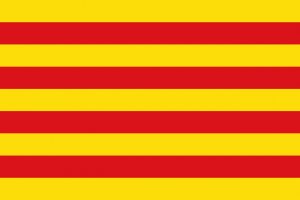Language/Catalan/Culture/History-and-Geography
Introduction
In this lesson, we will gain insight into the history and geography of Catalonia. We will explore the political status of Catalonia, its regional identity, and its cultural heritage. This lesson is designed for students who are complete beginners in Catalan and are aiming to reach the A1 level.
Catalonia: A Brief Overview
Catalonia is an autonomous community in northeastern Spain with a population of over 7.6 million people. It is composed of four provinces: Barcelona, Girona, Lleida, and Tarragona. Catalan is the official language of Catalonia and is spoken by the majority of the population.
Catalonia has a rich cultural heritage that dates back to the Middle Ages. Its capital, Barcelona, is known for its stunning architecture, art museums, and iconic landmarks such as the Sagrada Familia and Park Guell.
Political Status of Catalonia
Catalonia has a complex political history that has shaped its current political status. In recent years, there have been debates and conflicts over Catalonia's political status and its relationship with Spain.
Catalonia has a high degree of autonomy within Spain and has its own parliament, government, and police force. However, some Catalans believe that Catalonia should be an independent state, separate from Spain.
In 2017, Catalonia held a referendum on independence that was deemed illegal by the Spanish government. The referendum was met with violence and controversy, and its outcome did not result in Catalonia's independence. Nevertheless, the issue of Catalan independence remains a contentious one.
Regional Identity of Catalonia
Catalonia has a distinct regional identity that is rooted in its history and culture. Catalan culture is characterized by its rich traditions, art, music, and gastronomy.
One of the most visible signs of Catalan identity is the senyera, the Catalan flag. The senyera is made up of four red stripes on a yellow background and is often seen at public events and celebrations.
Catalonia also has its own unique celebration, La Diada de Catalunya, which takes place on September 11th each year. This day commemorates the fall of Barcelona during the War of the Spanish Succession in 1714 and is a symbol of Catalan identity and resistance.
Geography of Catalonia
Catalonia is a diverse region that is composed of different landscapes and natural environments. The region has a long coastline that stretches along the Mediterranean Sea, as well as stunning mountain ranges such as the Pyrenees.
Some of the most beautiful natural areas in Catalonia include the Aigüestortes i Estany de Sant Maurici National Park, the Costa Brava, and the Montserrat Mountain Range.
Catalonia is also known for its charming rural villages and towns that are full of history and traditions. Some of the most beautiful villages in Catalonia include Besalú, Banyoles, and Rupit.
Conclusion
In this lesson, we have gained insight into the political status and regional identity of Catalonia. We have also explored the beautiful landscapes and natural environments that make Catalonia such a unique and special place. By understanding the history and geography of Catalonia, we can better appreciate and value its rich cultural heritage.

